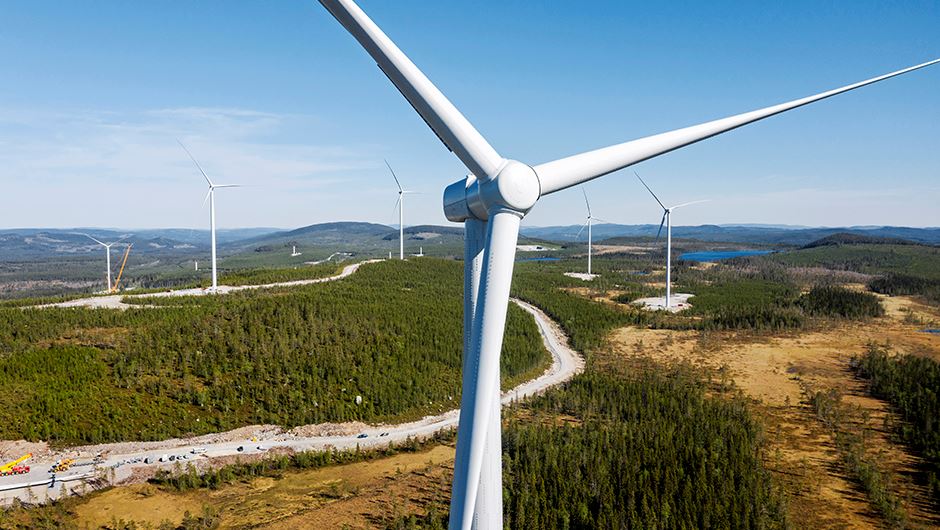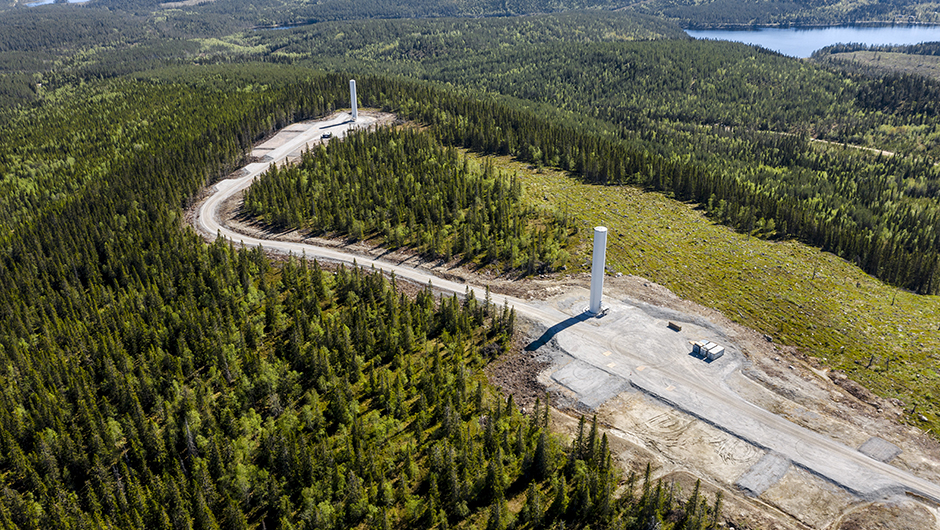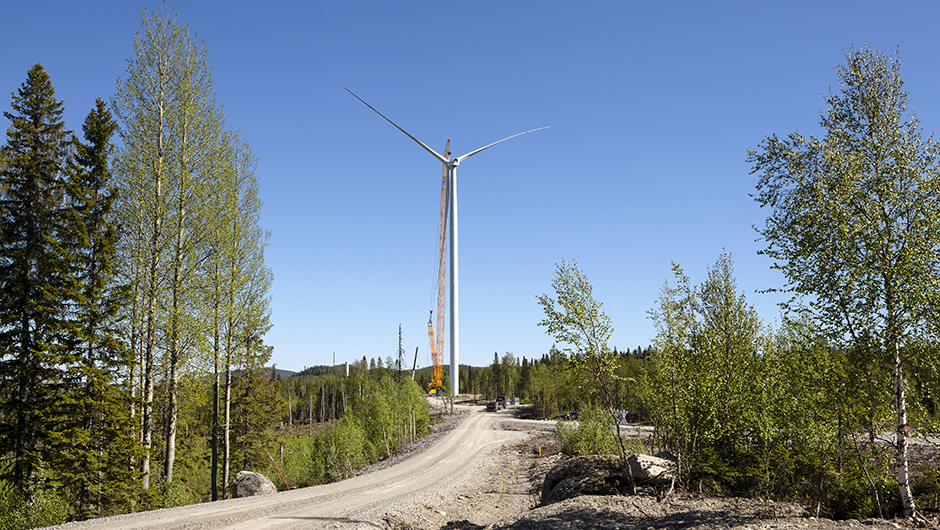Sustainable data centers as a service
How are wind turbines dismantled?
What happens when a wind power park is at the end of its life cycle? The wind power company take cares of its dismantling and recycling. Most wind turbines are made of recyclable materials, but the recycling of blades is still under development.

The service life of wind farms is currently 25–30 years and is likely to be longer in the future. Extending their service life will of course require maintenance, including the replacement of new parts.
”In about 15 years' time, there will be a large number of wind farms in Finland, so it remains to be seen how the technology will have developed by then and whether their service life can be extended by maintenance," says Rita Raulo from YIT’s wind power development team.
For example, blades can be replaced to make the wind turbine more cost-effective. This work is called ‘re-blading’ and this is already being done in European countries where wind power plants are older.
Wind turbine recycling has not yet been resolved with regard to the blades. Currently, there are still so few wind turbines being dismantled in Finland that it is not worthwhile for waste companies to invest in the related expertise, but the situation will change in the future. In Germany, the situation will be imminent in a few years' time.
Most of a wind turbine, i.e. more than 90%, is made of different metals, which already have a functioning recycling and refining market in Finland. The most prominent parts, the turbine blades, are known to be the most challenging from the recycling perspective.
”The most common misunderstanding is that the blades are some kind of waste that is hazardous to the environment and health. They are not, but their main material is composite reinforced plastic, that is to say, glass fibre-reinforced disposable plastic. Currently, discarded blades are used in research and development work aimed at finding solutions and processes for the reuse of blade material that is better in terms of circular economy thinking. They can also be burned,” says Rita Raulo, who has studied the subject.
For example, the KiMuRa project is analysing recycling opportunities for composites and reinforced plastics in Finland and will report its results in autumn 2022. The project is being funded by the Ministry of the Environment’s Muovimiljoona programme.
Recycling requires multiple parties
Blade material recycling is not yet being carried out, but the technology for sustainable recycling already exists. In the future, it is to be expected that public authorities will direct recycling more rigorously when political decisions are taken at EU level. Discussions are already under way, but when it happens is in the hands of the decision-makers.
”In Finland, Germany and the Netherlands, it is forbidden to bury blades underground. At the moment, the only solution for disposing of the blades is burning them in a cement oven, so that the remaining ash, which contains glass, can stay in the cement, so it is not necessary to dispose of it separately. The EU waste hierarchy declares that this is not recycling but recovery, which means that the energy and material are recovered, "says Markku Vilkki, CEO of Conenor.
Vilkki's company has developed a patented technology to transform glass fibre plastic waste into new composite materials. Various profiles and sheets can be produced from this material, for example for the construction industry, and Conenor has supplied several tonnes of it within Europe.
”The wind power industry will go into recycling when the whole chain becomes profitable and all materials can be recycled. In the chain, there must be a crusher, an operator converting blades into raw material for recovery, a recipient of the raw material that makes the new product, its distributor and an installation company. Money for the chain comes from two directions: the gate fee for recycling and the sales price for the final product. Ensuring that something is done with the blades and that the new product made of the modified material is sellable both cost money. Money must be distributed throughout the chain so that it is profitable for all. In this chain, the technology we develop will determine how waste is converted into money-generating raw material,” says Markku Vilkki.
Conenor is therefore not itself a commercial recycler, but a technology supplier, and discussions are already under way globally with various product manufacturers, plastic recycling companies and wind power manufacturers on the use of Finnish technology.
The willingness to develop effective recycling is strong. Indeed, wind energy umbrella organisations have said that recycling is the number one thing that needs to be resolved. However, the industry does not want to and cannot solve it alone.
”In the future, when the number of blades removed from use in Finland increases significantly, I believe that their recycling will become a market-based business. We can contribute to the recycling process by creating demand for recycled composite materials through our choices of construction material,” says Rita Raulo from YIT.
Landowners to be provided with a dismantling security for the final phase of a wind farm
The landowner's concern is often that it is their responsibility to dismantle the wind farm, but the lease agreement specifies a dismantling security at the outset, which allows the wind farm to be dismantled if the wind power company fails to meet its obligations to dismantle the wind farm at the end of its useful life. Over time, the security rises to its full value creating peace of mind for everyone.
"In addition to this, the landowner may want to renovate the farm with newer turbines, because the plan for the area already exists, as well as the roads and power grid, and data on the strength of wind in the area in the longer term," says Mika Virtanen, YIT's Head of Wind Power Development.
It is already evident in Germany and Denmark that wind farms are being renovated.

Recycling of foundations still in its infancy
As a rule, the foundations of a wind power plant are landscaped, i.e. they remain in the ground when the wind power plant is dismantled. Rita Raulo has studied the topic and its related environmental issues.
”YIT uses rock anchor foundations as much as possible, depending, of course, on the soil and bedrock. This uses less concrete, is more cost-effective and requires materials with a lower environmental load than gravity foundations. This can already be influenced in planning."
In the future, we can hope that the dismantling of the foundations of a wind farm will be so cost-effective that the reuse value of the dismantled material will be higher than the costs, so the foundations will not have to be landscaped. But it is not yet clear how far into the future this will be.
”The value of turbines could also rise so high in the future that someone will dismantle them at no cost or even pay for it," says Mika Virtanen.
Tensioning keeps the wind power plant upright




